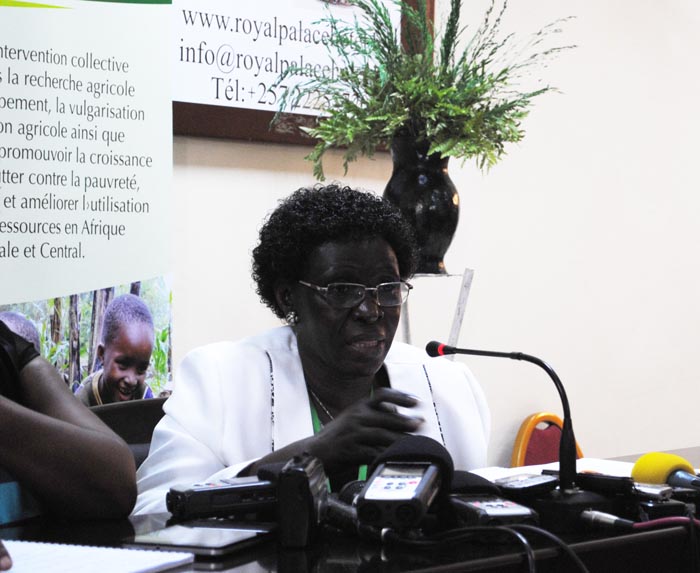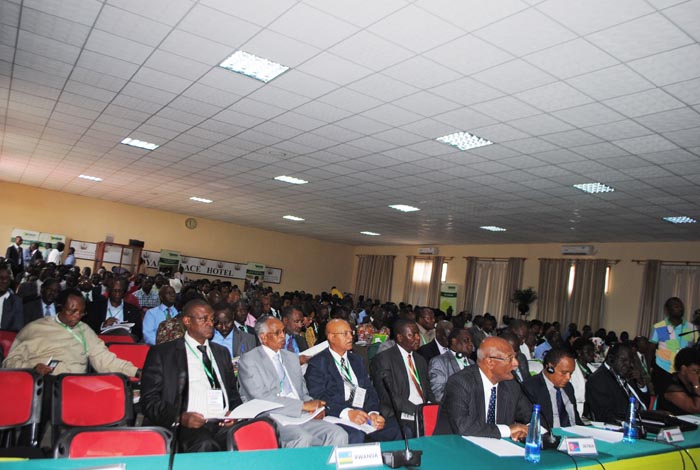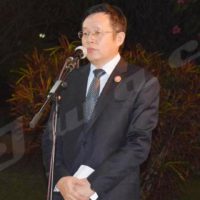The Association for Strengthening Agricultural Research in Eastern and Central Africa (ASARECA) has held a 2nd General Assembly and Scientific Conference this week from 9th to 13th December in order to transform agriculture for economic growth.-Diane Uwimana
Facilitating, enhancing and nurturing partnerships that involve national agricultural research institutions, extension, universities, NGOs, private sector, farmer organizations, and international research institutions in order to address constraints and/or opportunities across the different countries are some of the activities done by the Association for Strengthening Agricultural Research in Eastern and Central Africa (ASARECA). ASARECA galvanizes collective action to deal with issues that need regional action in which ASARECA members emphasise in different areas such as generation and dissemination of relevant technologies, innovations and management practices, enhancement of enabling policy environment, capacity building and knowledge management and information sharing. “Our mission still remains the enhancement of regional collective action in agricultural research for development, extension and agricultural training and education, to promote economic growth, fight poverty, eradicate hunger and enhance sustainable use of resources in Eastern and Central Africa (ECA). The purpose is enhancing food security and income through equitable access and utilization of agricultural innovations in ECA,” declares Dr Opio Fina, the Executive Director of ASARECA.
“Improving innovations and technologies”

Dr Opio Fina, the Executive Director of ASARECA: “The purpose is enhancing food security and income through equitable access and utilization of agricultural innovations in ECA.”©Iwacu
During the first plan of the ASARECA action, Dr Opio Fina mentions that it has implemented 90 projects and 310 sub-projects in the region and achieved most of the set targets. “Through these projects or activities, a total of 409 technologies, innovations and management practices have been generated. These include improved varieties, water management practices, integrated soil fertility management, agronomic and storage packages, value addition technologies and innovative marketing tools,” she says. Over 1.45 million small holder householders have directly benefited from ASARECA interventions :“Improving their capacity in engaging in productive and profitable agriculture; assisting in opening up market opportunities for farmers to buy farm inputs and sell their products ; enhancing their productivity leading to improved access to food; nutrition and improved income as well as wealth creation for the household.” In other terms, eight million individuals in each householder of an average of six family members have benefited. Odette Kayitesi, Minister of Agriculture and Livestock, indicates that Burundi like other ASARECA members depends on agricultural products. “In our country, agriculture contributes between 40% and 56% in GDP and 86% of export revenue. It provides 95% of food supply and 92% of the population work in agricultural sector, that’s the reason why we must gather our strengths to work hand in hand in boosting this sector,” highlights the Minister. In his opening remarks, Gervais Rufyikiri, the 2nd Deputy President, mentions that countries gathered in the ASARECA face similar challenges. “There are very poor access to agricultural inputs, unavailable and insufficient collective research , problem of climate change and little development of factories of agro-food transformation towards hard conservation and agricultural products trade,» mentions Rufyikiri. ASARECA collaborates with EAC and COMESA. A total of 37 policies, law, regulations and procedures have been approved by various legislative bodies of the two institutions. “Seed for regulation of variety evaluation and release, certification and plant variety protection, potato and cassava standards in EAC and bio-safety regulations are some of these policies already implemented in these areas,” says Dr Opio Fina. These harmonised policies will enhance sharing of technologies and innovations within and across countries. It is worth reminding that ASARECA covers 11 countries which are Burundi, DRC, Eritrea, Ethiopia, Kenya, Uganda, Rwanda, Sudan, Tanzania, Madagascar and South Sudan. Each country is committed to increasing the national budget by 2015 to at least 10% in agriculture. Furthermore, the ASARECA partner state must contribute $ 5000 per year for its activities’ smooth running. ————————————————————————————————————————————————- In the next five years, ASARECA‘s focus will be on three broad areas
The first one is sustainable agriculture, food security and nutrition. This will entail developing and scaling up innovations and technologies that enhance productivity, sustainable intensification of agricultural systems, post harvest handling, processing, nutrition, health and conservation of plant and animal genetic resources. The second area is market. Market linkage to trade which aims at linking farmers to markets, facilitating enterprises development that includes engagement with youth and strengthening value chains for different priority commodities, policy formulation and harmonization across countries on food safety and quality as well as removal of non-tariff barriers. The third area is natural resource management and ecosystem services, including climate change resilience and mitigation, efficient use of water resources, soil health as well as management and ecosystem sustainable.




















 IWACU Open Data
IWACU Open Data

